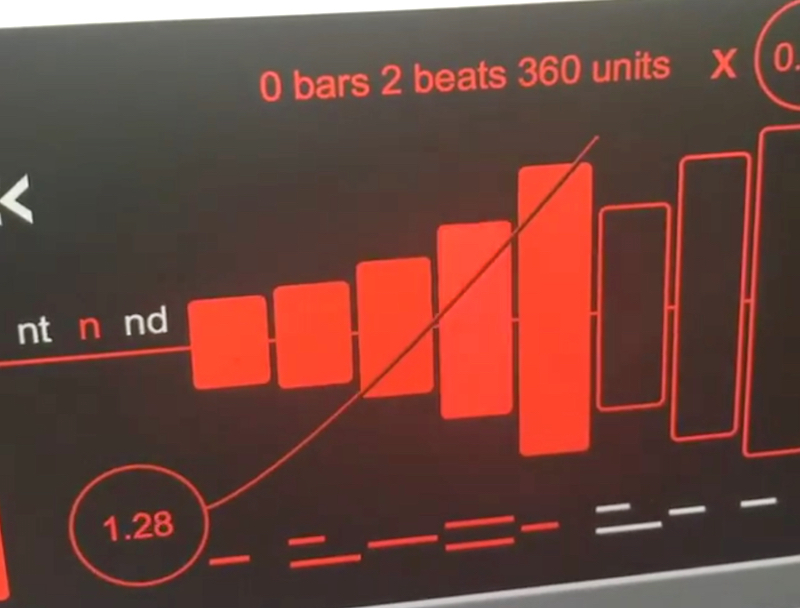Software Overview: K-Devices OOG Tools

Let’s get this out of the way first: I love K-Devices!
I’ve always appreciated their Max for Live devices. The first thing that drew me to them was the aesthetics of their devices. If I’m going to be working away late into the night in the studio, I at least want to be looking at a UI that is functional and pleasing to the eye. It's funny how this point alone seems difficult for developers to achieve. But - at least for me - K-Devices knocks it out of the park.
This time out, I'd like to tell you about OOG Tools - two Max for Live new devices from them coming out of a year of development: MOOR and Twistor.
“OOG” stands for Out Of Grid. This series includes a set of incredible Max for Live devices designed to write music and control instruments and effects in a brand new way.
In recent years, I’ve seen a lot of electronic dance music, IDM, experimental and other music moving away from standard time signatures. "Sure," I hear you say, “Autechre have been doing this for decades." Yeah, but clearly they were ahead of the curve - and the curve is just catching up. These days, I can step out to a local show in LA almost any night of the week to hear nothing but syncopated beats and polyrhythms.
K-Devices addresses this area with their new devices, allowing you to still use Ableton Live, whilst stepping into sonic movements, passages and syncopation that are truly ‘off the grid’.
Let’s take a look at MOOR

On the outside, it’s a mono sequencer for synths. On the inside, it is much much more than just that! I should start by mentioning that MOOR is an audio-rate sequencer with a high level of accuracy, which is important when stepping outside of the bounds to prevent sounds turning to complete chaos.
It also has a very long list of features that I’ll try to capture here;
It can produce any time resolution for each step
Exclusive step durations per step
Automation over global length
Bend - allows you to bend the playback head from linear to exponential or logarithmic.
Distinct chance option per step
Advanced pitch randomization per step
And more.
Within minutes of dropping MOOR into a new Live set, I'd made sounds that I would use in my own music - sounds I could call my own without fear of them being derivative. And the best was yet to come: With a few more clicks of the mouse, I had an evolving generative song structure with more new sounds. This is truly one of those Max for Live devices that just keeps giving, and a really neat tool to have in your arsenal for those days when you need to ‘step’ it up.
The second device inside of OOG Tools is Twistor

Twistor shares some functionality with MOOR. Rather than sequencing a synth or making patterns, Twistor allows you to sequence almost any parameter inside Live, courtesy of the Live API. This form of sequencing isn’t new - I made a tutorial series that covered this approach back in 2011, in fact. What is new is the truckload of functionality that K-Devices has built around this method of parameter manipulation. Thanks to powerful pattern creation and twisting features, Twistor creates modulations that are not possible to obtain with other modulators out there.
I’ve loved parameter sequencing since I was first introduced to it. As opposed to sequencing notes, parameter sequencing can give you results unimaginable by simply changing which parameters/effects you sequence without touching a single button on the sequencer device itself.
Adding a device like Twistor into the mix, the world of possibilities expands considerably. Rather than changing a parameter’s set amount per step you can change the timing in which that takes place to be a signature different than Live’s global timing. You can throw chance, smooth, lock duration and bend into the mix, as well. And you will have gone from simple sine tone synth with an autofilter effect to another galaxy. Export that sound and call it a track - it’s really that good.
An additional great thing about these devices is their ability to stay clear of other random/probabilistic pitfalls I’ve seen in the past - that situation where you get a great sound/sequence going, but before you know it the sound has devolved to crap and your ‘chance’ of getting back to it is worse than your odds on the next Powerball.
K-Devices has added snapshots and the ability to lock and save your settings to MIDI clips with just a click - one feature I feel is particularly important. I’m thankful they paid close attention to it.
All in all, I cannot recommend these devices enough. Whether you’re trying to move away from repetitive music making, looking to experiment more, or you’re just a sequencer collector, these devices fill a unique niche that no other Max for Live devices can lay claim to.
K-Devices have done it again!
by Tom Hall on November 7, 2017

